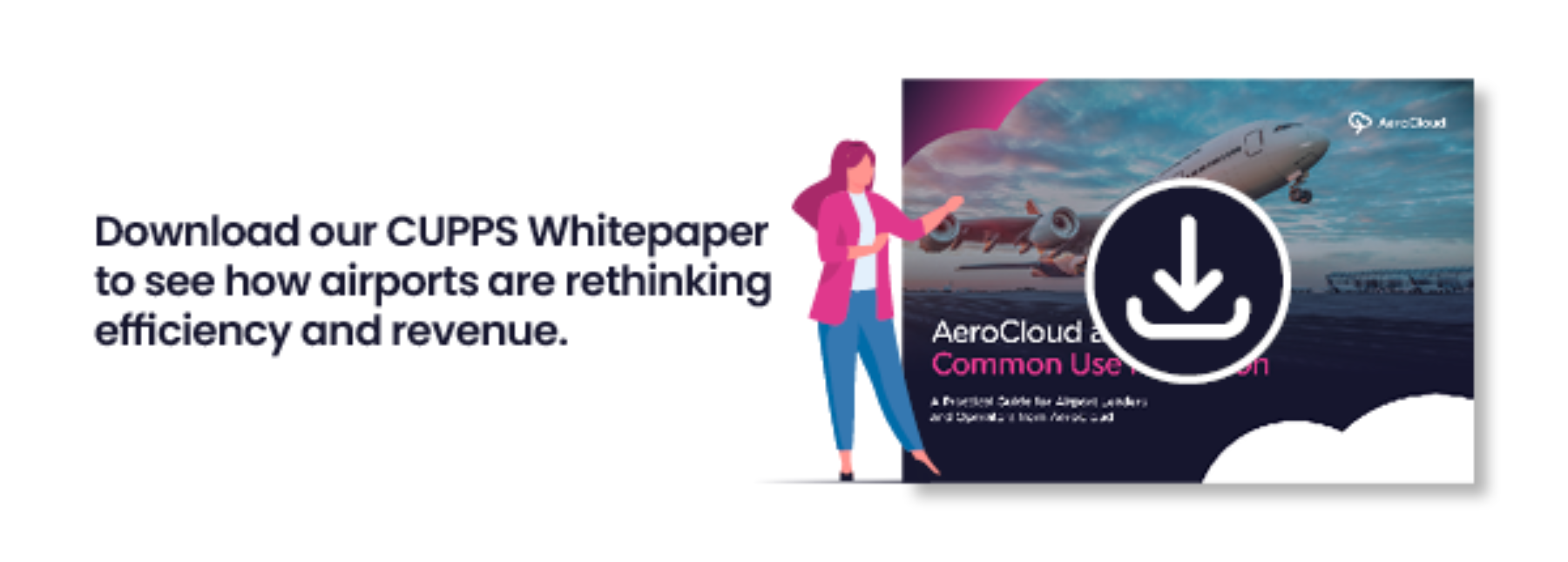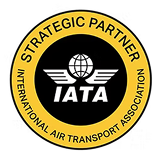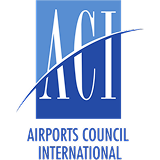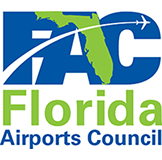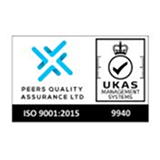Is it time to modernize my airport?
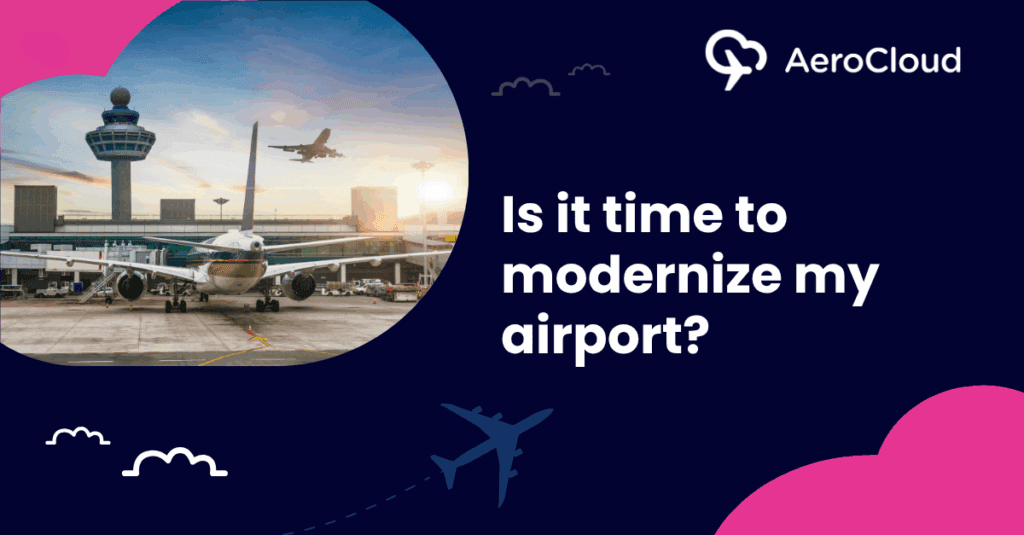
The aviation industry is experiencing unprecedented growth. The modernization push is driving robust growth in the airport systems market, projected to expand from $32.28 billion in 2024 to $50.27 billion by 2030. Despite this growth, many airports continue to rely on outdated, inefficient passenger processing systems that create bottlenecks, drive up costs, and frustrate travelers at every touchpoint.
With passenger numbers surging and traveler expectations higher than ever, airports can no longer afford to operate on legacy systems that were designed for a different era.
The Getting on the Runway to Growth report reveals that upgrading legacy technologies and systems is one of the top commercial priorities for 92% of global airport leaders. The message is clear: in the next few years, modernization will shift from a choice to a necessity for airports.
The real cost of legacy systems
While airlines have embraced digital transformation, many airports still process passengers through disjointed, airline-specific systems that waste space, inflate costs, and create operational headaches. Each carrier operates its own dedicated check-in counters, kiosks, and boarding equipment, most of which sits unused for significant portions of the day.
This legacy approach creates substantial hidden costs for airports:
Underutilized Infrastructure: Dedicated airline equipment often operates far below capacity for specific carriers during peak periods, leaving expensive hardware idle while other airlines experience bottlenecks just meters away.
Space Inefficiency: Expensive terminal real estate is locked into single-use setups, preventing airports from maximizing commercial revenue opportunities and passenger flow optimization.
Staffing Complexity: Multiple systems require specialist training for different platforms, creating scheduling challenges and limiting operational flexibility during irregular operations or seasonal fluctuations.
Maintenance Overheads: Managing different systems, hardware types, and vendors drives up costs because IT must maintain expertise across many platforms and juggle multiple contracts. The lack of standardization slows troubleshooting, increases downtime, and adds overheads to vendor coordination.
What is Common Use In Airports?
Common Use Passenger Processing Solutions (CUPPS) represent a fundamental shift from dedicated, airline-specific systems to shared, flexible platforms that any authorized user can access from any workstation. Built on globally accepted IATA technology standards, CUPPS creates a unified environment where airports, airlines, ground handlers, and FBOs can process passengers through the same hardware and software infrastructure.
Instead of easyJet needing dedicated check-in desks that sit empty when their flights aren’t operating, CUPPS allows any check-in position to serve any airline at any time. A single workstation can process a British Airways passenger in the morning, a Ryanair traveler at midday, and a Wizz Air customer in the evening, all through the same interface, with the same peripheral devices, managed through a single platform.
This shared approach eliminates unnecessary hardware, maximizes space utilization, and creates the operational flexibility that modern airports need to handle fluctuating demand, seasonal variations, and adapt to disruptions.
The Case for Common Use: A Better Way to Run Airports
Financial Benefits
The economic advantages of CUPPS deployment extend far beyond simple cost reduction. London Luton Airport’s implementation of AeroCloud CUPPS platform demonstrates the tangible financial impact: reduced operational and capital expenditure, combined with optimized space utilization that unlocks new revenue opportunities.
Reduced Capital Expenditure: Instead of purchasing separate equipment for each airline, airports invest in a single, shared infrastructure that serves all carriers. This dramatically reduces hardware requirements and eliminates redundant peripheral devices like printers, scanners, and boarding pass readers.
Lower Operational Costs: Shared resources mean fewer maintenance contracts, simplified support arrangements, and reduced training requirements. Staff can operate any workstation for any airline, creating unprecedented scheduling flexibility.
Optimized Space Utilization: By eliminating dedicated airline zones, airports can reconfigure check-in areas dynamically based on real-time demand. This flexibility enables better passenger flow management and maximizes revenue-generating commercial space.
Operational Advantages
Sarasota Bradenton International Airport’s growth from 1.2 million to 4.3 million passengers through the same infrastructure showcases the operational transformation that CUPPS enables. The airport successfully scaled capacity without physical expansion, handling unprecedented growth through operational efficiency alone.
Enhanced Flexibility: CUPPS platforms enable real-time switching between airline applications and systems. When unexpected delays or irregular operations disrupt schedules, staff can instantly reconfigure workstations to handle different airlines or processing requirements.
Improved Resource Allocation: Instead of overstaffing quiet airline counters while other carriers experience queues, airports can deploy personnel based on actual demand patterns rather than fixed airline allocations.
Reduced Processing Times: Shared systems eliminate bottlenecks created by airline-specific equipment failures or capacity constraints. If one workstation experiences issues, passengers can be processed at any available station without system limitations.
Passenger Experience Enhancement
The modern passenger expects seamless, intuitive airport experiences that mirror other digital interactions in their daily lives. CUPPS platforms deliver this expectation while driving measurable business outcomes for airport operators.
Reduced Queue Times: Dynamic workstation allocation eliminates artificial barriers between airline processing areas. Passengers flow to the first available agent rather than waiting in airline-specific lines.
Enhanced Commercial Revenue: Faster processing means passengers spend more time in commercial areas. Reduced wait times translate directly to increased duty-free shopping, food and beverage purchases, and other ancillary revenue opportunities.
Improved Airport Choice: Superior passenger experiences influence airline route decisions and passenger airport preferences. Airports with modern, efficient processing systems attract more carriers and retain more travelers.
Operational Resilience: During irregular operations, hurricanes, or equipment failures, CUPPS enables rapid recovery. Sarasota Bradenton International demonstrated this advantage when Hurricane Ian damaged four airline counters. Airlines using AeroCloud’s common use platform resumed operations within two days, while carriers relying on legacy systems remained grounded for four to five days.
Core Common Use Modules
Common Use eDesktop
AeroCloud eDesktop transforms traditional check-in desks into flexible, secure workstations that support multiple airline Departure Control Systems through a single interface. Staff log in to access the specific airline systems they need in just one click, while the underlying platform manages security, peripheral devices, and system integrations.
The cloud-native architecture eliminates the need for on-premise servers and complex IT infrastructure. Updates deploy automatically across all workstations, ensuring consistent functionality and security compliance. Integration with existing hardware also protects previous investments while enabling modern capabilities and reducing the need for new, costly hardware.
Key Capabilities:
- IATA CUPPS-compliant operation with all major airline systems
- Secure, virtualized desktop environment supporting Windows, Android, and iOS applications
- Plug-and-play compatibility with existing printers, scanners, and biometric devices
- Real-time reporting on workstation usage and system performance
- Web-based management portal for centralized oversight
Electronic Departure Control System (eDCS)
For airports and airlines seeking an alternative to expensive, complex legacy systems, AeroCloud eDCS provides comprehensive passenger processing functionality through a modern, cloud-native platform.
The system handles all core departure control functions while maintaining full compliance with industry messaging standards. Integration with global systems ensures seamless operation regardless of destination or partner airline requirements.
Complete Processing Suite:
- Passenger check-in and boarding management
- Baggage processing and tag printing
- Passport scanning and document validation
- Weight and balance calculations
- Payment processing at service desks
- Flight Watch for real-time operational control
- Mobile check-in and boarding capabilities
Security Scanning Solutions (eScan)
eScan creates comprehensive passenger journey tracking by capturing movement through all key terminal checkpoints. Each boarding pass scan validates against flight schedules, checks for duplicates, and builds a real-time operational picture of passenger flow throughout the terminal.
Integration with airport dashboards provides immediate insights into congestion, processing efficiency, and queue management. This visibility enables proactive decision-making and data-driven resource allocation.
Operational Intelligence:
- Real-time passenger validation at multiple touchpoints
- Live dashboard reporting on queue lengths and processing times
- Integration with airline DCS systems for authorization checking
- Time-stamped journey tracking from check-in to boarding
- Predictive analytics for congestion management
Common Use Self-Service Solutions (CUSS)
AeroCloud CUSS kiosks eliminate the traditional limitation of airline-specific self-service equipment. Passengers interact with a single interface that automatically switches between airline systems based on their flight details, creating a consistent experience regardless of carrier.
Manufactured in the UK with custom branding options, CUSS kiosks integrate seamlessly with existing terminal aesthetics while providing advanced functionality that reduces check-in desk pressure and enables smarter staff deployment.
Comprehensive Self-Service:
- Multi-airline support on single kiosks
- Integrated passport readers and document scanners
- Boarding pass and baggage tag printing
- Payment processing capabilities
- Frequent flyer program integration
Real-World Implementation: Customer Success Stories
The transition to Common Use Systems represents a significant operational change, but successful deployments demonstrate that implementation can occur without service disruption. London Luton Airport completed their AeroCloud CUPPS deployment during half-term holidays, one of their busiest periods, with zero downtime and zero impact on daily operations.
Sarasota Bradenton International Airport’s deployment of AeroCloud Common Use Passenger Processing Solution (CUPPS) demonstrates how smart technology can transform an airport’s capacity without physical expansion. The cloud-native CUPPS platform enables any agent from any airline to process passengers through a unified, user-friendly interface, maximizing efficiency in check-in zones and eliminating the need for expensive on-premise hardware and maintenance. This highlights how common-use technology not only optimizes daily operations but provides critical operational continuity during irregular events, ultimately reducing costs for both airports and their airlines while maintaining service reliability.
The Competitive Advantage of Modernization
60% of global airport leaders recognize that not investing in technologies poses significant competitive risks. Airports that delay modernization face mounting disadvantages as passengers increasingly choose facilities that offer superior experiences, and airlines prefer partners with operational flexibility and efficiency.
Early CUPPS adopters report measurable competitive advantages: increased passenger handling capacity without proportional cost increases, enhanced ability to attract new airline partners, and improved operational resilience during disruptions or events. Most importantly, these airports build the data and operational foundations needed for future industry developments and investments.
The question for airport decision makers isn’t whether Common Use systems deliver value, the evidence from successful implementations is overwhelming. The question is how quickly airports can implement these solutions before competitive pressures make modernization a reactive necessity rather than a strategic advantage.
Ready to Transform Your Airport’s Passenger Processing Efficiency?
Modern passenger processing isn’t just about replacing old systems with new technology. It’s about fundamentally rethinking how airports operate, how resources are allocated, and how passengers experience airports. CUPPS platforms don’t just solve today’s operational challenges, they lay the groundwork for smarter, scalable airports.
Airports that deploy AeroCloud CUPPS gain immediate operational improvements: reduced costs, enhanced flexibility, and improved passenger satisfaction. More importantly, they position themselves for future growth and innovation in an industry where adaptability determines competitive success.
The aviation industry is modernizing rapidly. The modernization push is driving robust growth in the airport systems market, projected to expand from $32.28 billion in 2024 to $50.27 billion by 2030. Airports that act now will shape this transformation. Those that wait will be forced to catch up.
Modernize your airport with AeroCloud
Discover how AeroCloud CUPPS can transform your airport operations with flexible, cost-effective passenger processing solutions. From reducing queue times to maximizing operational efficiency, our cloud-native platform delivers measurable improvements in weeks, not years.
Schedule a consultation and see how airports like London Luton Airport and Sarasota Bradenton International Airport are gaining competitive advantage through AeroCloud Common Use systems.









 13th October 2025
13th October 2025 